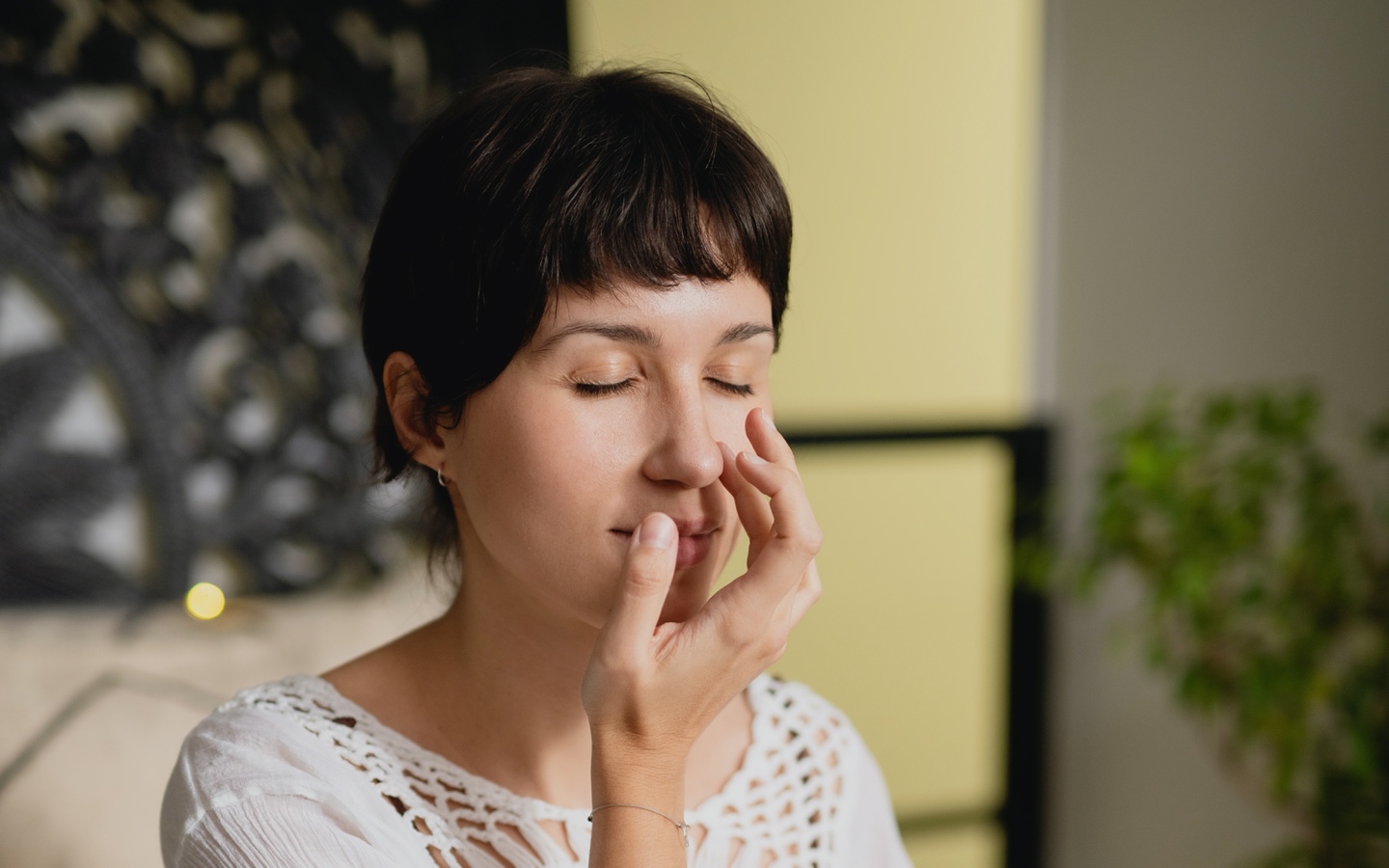Inconsistent sleep patterns can quickly undermine both your physical and emotional well-being. Ayurveda principles offer practical tools that can help promote optimal rest.
When we get between seven and nine hours of sleep, we give our body and brain the opportunity to rest and reenergize. However, according to the National Institutes of Health, the percentage of adults who fall into the category of “chronically sleep-deprived” — sleeping less than six hours a night — has increased significantly over the past three decades. It’s estimated that 50 to 70 million Americans suffer from insomnia and other sleep-related disorders. From sleep-tracking apps to prescription drugs to CBD gummies with melatonin, there’s no shortage of sleep-aid options for those in search of a decent night’s sleep.
But an increasing number of sleep-deprived individuals looking to get more beauty sleep are turning to Ayurveda, an ancient healing practice focused on creating physiological and energetic balance in the body, mind, and spirit. In Ayurveda, sleep is one of the three foundational pillars of life, along with digestion and energy management.
We spoke with Ayurvedic naturopath Dr. Anup Mulakaluri about the Ayurvedic principles behind mainstream sleep tips, the importance of routine and ritual, and how your energy type can inform your sleep style. Here’s what we learned.

Read more: How Sleep Affects Metabolic Health
In Ayurveda, there are three doshas, or energy types, considered to be within us all: Vata, Pitta, and Kapha (in elemental terms, Vata aligns with air, Pitta with fire, and Kapha with Earth). Together, they contribute to our physiological, mental, and emotional well-being. Most people are thought to have a dominant dosha, which can provide a blueprint for achieving optimal health.
But as Dr. Mulakaluri explains, different doshas are also more active within us depending on the time of day, which influences our internal clock.
“In Ayurveda, we consider the natural rhythms of the day,” says Dr. Mulakaluri. “In the evening, the grounding energy of Kapha predominates, helping dull the mind and release the tension that relates to active thought processing.”
Kapha time is from 6 to 10, both morning and night. When Pitta time arrives at 10 pm, the mind is thought to become more active, so it’s recommended that you head to bed before the Kapha window closes.
“The idea of a set sleep routine to let the body anticipate its individual circadian rhythm is very important in Ayurveda,” says Dr. Mulakaluri. If your body can count on you to go to bed at a certain time each night, it will begin to prepare hormonally by releasing melatonin on that schedule.
“But when we try to push through being tired, we waste melatonin and instead give ourselves a cortisol surge at the wrong time of day,” he says. “When we do this, we go to sleep when we’re worn out instead of letting sleep invite us into a time of rest.”
Read more: How Food and Alcohol Affect Sleep
Start a wind-down process an hour before you get into bed (ideally avoiding stimulus from screens). Whether it’s stretching, meditation, or cleaning up the kitchen, the activity should be calm and quiet. If you read, stick to something uplifting to keep your mind in a positive state, or if you need to vent about the day, journal with a 5- to 10-minute time limit.
There are several Ayurvedic breathing exercises Dr. Mulakaluri suggests for sleep, too, including alternate nostril breathing to calm the nervous system; Sheetali (known as “Cooling Breath”) to settle a racing mind; and So Hum, a calming mantra that dulls sensory input.

“Neurofeedback through self-massage, particularly on the feet and head, can calm the whole body,” says Dr. Mulakaluri. Using Ayurvedic oils (you can also use sesame oil), gently massage the crown of the head to calm the central nervous system or the feet to promote calming in the peripheral nervous system.
Read more: 4 Ways to Feng Shui Your Bedroom For Better Sleep
To apply Ayurvedic principles for more balanced sleep, it’s helpful to have an idea of your dominant dosha. (Not sure of yours? Take a quick online test.) There is some research to support the relationship between doshas and sleep style — a 2015 study assessing sleep patterns based on dosha found that those with the same dosha tend to share similar quality and quantity of sleep.
Vata: It can be difficult to fall asleep and stay asleep — your mind races and you might wake up during the night feeling restless. (Vata-dominant people are more likely to experience insomnia). Focus on nighttime rituals, with an emphasis on destressing.
Pitta: You might not have an issue falling asleep, but may wake up during the night because of stressful dreams or anxious thoughts. (Pitta-dominant people are also more likely to experience insomnia). Focus on nighttime rituals, and avoid a warm, stuffy sleep environment.
Kapha: You might sleep too much and/or have difficulty waking up in the morning. (Kapha-dominant people are more likely to experience hypersomnia). Focus on morning rituals like fire breathing — quick and powerful breaths that increase oxygen to the brain — and vigorous movement like walking or squats first thing to wake up the body.
Read more: The Therapeutic Pillow Spray Your Sleep Routine is Missing
Do you use Ayurvedic principles to help you fall asleep? Share your tips by tagging us @avocadogreenbrands on Instagram or Facebook.

Shop Pillows
The Essential Organic Pillow Collection
Gentle, breathable, non-toxic support.





